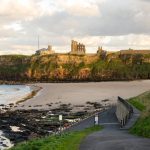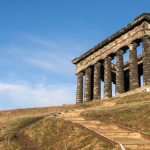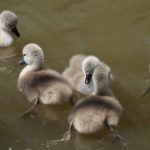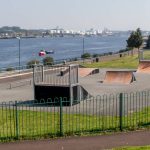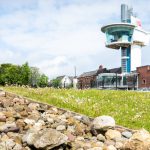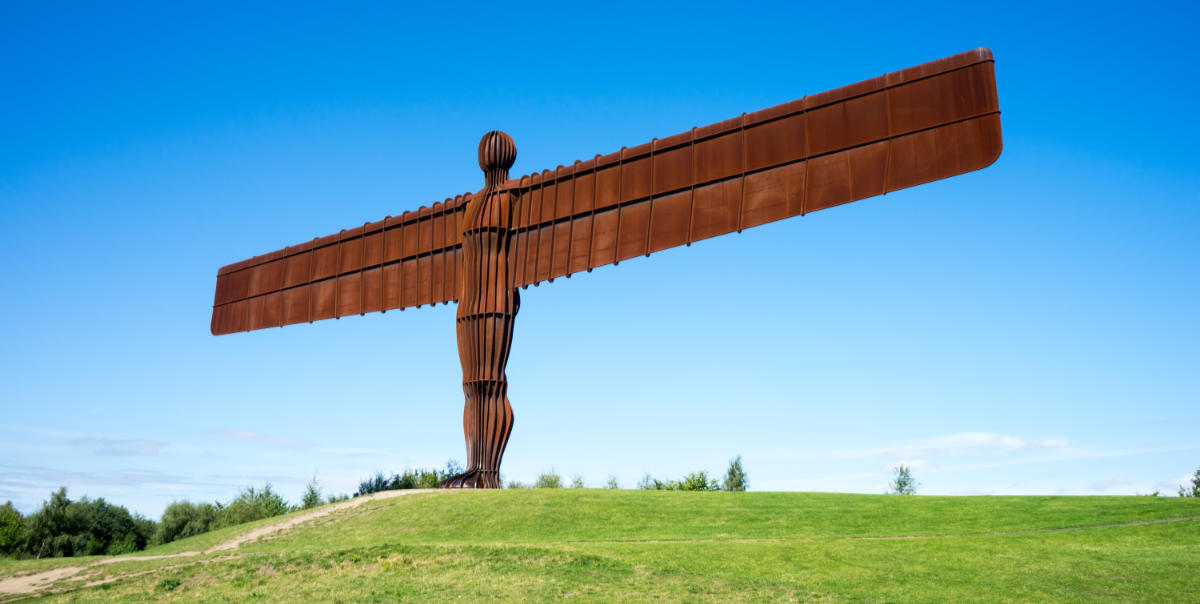
Washington, that world-famous location in Tyne and Wear.
Many miles east and much farther down the glamour chain than the American version, the town of Washington, in Tyne and Wear, is a far cry from the United States. Have sympathy for them. It can’t be easy having to add (Tyne and Wear) to every Google search you do in your home town. Imagine the results for “Where to eat in Washington?” The Google bot has never been so confused.
Anyway, on with the story. Washington is part of the Sunderland district of Tyne and Wear. Considered a lovely place to live, it played home to the first colliery wagonway in the north. It became a city in 1992 and held enough important mines that the soldiers fought bitterly over it back during the Civil War. That’s right – England had one of those. Just like the politics of today, the choice in leader was a bad ‘un.
Let’s take a stroll back through Tyne and Wear time and explore the world of Washington, England. The town that Washington DC is definitely not named after.
Early History of Washington, Tyne & Wear
The earliest anyone bothered to write the name of the town down was all the way back in the 11th century. Washington was Wasindone in Old English, back in 1096. The town grew up around an ‘Old Hall’, which historians think may have appeared in 1183. Of course, the local historical society puts the town’s origins as farther back than that.
For them, the town began in the Middle Stone Age, when early humans used the area near Shaddon’s Hill. Archaeologists uncovered a site there in 1925, which dates to between 9600 and 4300 BC. Afterwards, a new Stone Age axe artefact tells us that the area was still in use. The axe is in the Sunderland museum. Three Bronze Age burials discovered in 1907 tell us that the land was in use as late as 750BC.
In 1939, those excavating the train station found a hoard of Roman coins, so now we know that the town was at least partially occupied by the Romans. The historians believe that the town’s name comes from an Anglo-Saxon name, probably around the 7th or 8th century. The landowner’s name was Wassa, who may have been a small-time lord or even a Viking who settled here. Whoever Wassa was, they started a small settlement, one that has not stopped growing since.
Medieval Times in Washington, Sunderland
The middle ages for Washington started in 1112 when the town shows up in the records for the first time. Records show that it was in a charter dated 11th June, issued by Bishop Ranulf Flambard. As of this charter, you can trace the history of the local Holy Trinity Church all the way down to modern times. To have placed a parish or church here, there would have had to have been enough of a population to make it workable. Usually, enough people in one place would spring one or two holy men. Each holy man needed his own church.
In 1140AD Robert de Bydik obtained the Manor of Bydik. Then, in 1183, William de Hertburn built the Old Hall and started a tradition of his own. By 1539, the family became de Wessyngton after the estates and they moved on to Sulgrave Manor. The Old Hall later fell into the hands of one Sir Isaac Lowthian Bell and his family, circa 1871.
It later became a Dr Barnardo’s children’s home to house children displaced during WWII. Once all that was done, the coal board used it to train people. Now? Someone lives there. Please don’t go poking around the private property with a camera, you might get arrested.
Slow Growth
The town grew slowly but steadily for a couple of hundred years. In 1264, Walter de Washington potentially fought in the Battle of Lewes. In 1276, King Edward I granted the Washington Rectory ten marks. He then visited later, in 1304.
In 1606, residents dug the first coal in the Biddick Estate. In 1633, a woman named Ann Heath left 10/- to the Washington poor. In 1644, during the Civil War, one of the rectors fled the town for being a Royalist supporter. In 1665, the town raised 7 shillings for victims of the plague in London.
Up until the Industrial Revolution, it stayed a sleepy town. It was somewhere you came from, not somewhere you went to. This seems like a natural stopping point to find out some fun facts.
Fun Facts about Washington, England
At this stage in our guide, we like to take a momentary breather from this history. Some of us have eye strain. In the meantime, here are some grandiose, eloquent, and outrageous facts about Washington that you can bring out at parties to impress your pals. Here goes nothing:
- Washington DC is categorically not named after Sunderland town. So much so, that Sunderland government bodies released details of Washington’s links with England just so they could correct residents. Washington DC is named after George Washington. However, though the town is named after the president, the president’s name comes from having an ancestor settle here. The ancestor took the name of the town, and the rest is history.
- The rectory record for the Holy Trinity Church is unbroken since its establishment. Through several great plagues, two great wars, and one pandemic, that church has stayed the course. That’s nearly 700 years of churching. That’s commitment.
- In 1154, the Bishop allowed tenants on the land to use the wasteland around Birtley Common. This was the western boundary of their parish. Presumably, they used the land for agriculture, cattle grazing, or trading.
- In 1196, local officials appraised the Holy Trinity Church. It was worth an astonishing £33.
- In 1567, two local men forcibly robbed a priest. They are lucky they didn’t open Sunnydale-style hell gates.
- The earliest surviving map of the town dates to 1702. Presumably, before this, we did not need maps. Nobody could travel far enough to need one.
- In 1863, the world’s first aluminium was made in Washington. That’s pretty cool.
OK, so maybe there was still a little history left in us, after all. Let’s get back to it before it eats away at our souls.
The Industrial Period
In 1708, a local colliery explosion killed 69 workers. The Fatfield Colliery had three pits, and fire came belching from all three at once. There was an explosion which sees described as ‘like the blast of a cannon.’ At least two men and a woman were blown from the base of the shaft to the surface. Descriptions of their deaths were grim at best. Fish in a nearby stream were found dead, so strong was the blast. The engine which pulled the lift up and down from the surface collapsed.
Although Washington was one of the earliest towns to have a coal wagon, they no longer have a railway station. Washington station opened earlier than any other train station in the north, in 1835. It closed in 1963 when the need to transport coal died down and the train station became too quiet to be possible. The mining authorities say ‘fire damp’ handled the accident. This was caused by the trapped air and build-up of chemicals like sulphur.
By 1732, attempts were ongoing to ventilate the shafts properly. In 1737, John Curry began quarrying for stone to the west of town. A further explosion in the North Biddick colliery in 1743 killed another 17 people. It also proved that the town still had not worked out the deep mining shaft ventilation issues. The introduction of safety lamps helped, but there were still explosions when miners opened the casing to get more light.
More Tragedies
The town was plagued… in 1767, another explosion, again at Fatfield, killed 39 people. A great flood in 1771 washed away workings at three collieries: Biddick, Chartershaugh, and Low Lambton. In 1773, another 19 workers died in an explosion in the North Biddick Colliery. In 1796, nine died at the Washington Colliery. Then again, in 1805, a further explosion at Oxclose killed 38.
By then, the pits hired 800 men between them. In 1817, Harraton caved in during an explosion, killing 38 men and boys and another 8 when a connected pit suffered the aftershocks. It doesn’t end. There was an explosion in Washington I pit in 1828, killing 14. In 1833, 47 died in a gas explosion in the Springwell Colliery. There were explosions in 1885, 42 dead, in 1908, 14 dead… and those were all we could find. What a horrendous way to die. We remember you, miners of Washington.
During this same period, the town gained a rope works, and several old buildings. In 1872, the death of a 7-year-old while cleaning the chimneys of the town hall prompted the mayor to ban child chimney sweeping.
Modern Day Washington, Tyne & Wear
By 1921, the population of the town was 20,800 people. This was miraculous, given the casualties of the previous hundred years. It was doubly miraculous due to the war effort. The unveiling of the WWI memorial in 1920 commemorated 179 casualties.
The Old Hall was taken over by the National Trust in 1956. Two years later, the RAF Station in Usworth closed. In 1964, Washington became a New Town. It was expanded to hold 19 residential villages, 11 areas for working and a retail centre. It has yet to stop expanding since. Washington is a lovely place to live, having a smaller population than the New Town’s which are closer to London. It’s the kind of place you would be happy to raise your children. That’s not a claim all towns can make.
Famous People from Washington – not DC
Now that we have gotten to the end of the history lesson, we can relax and dig into some fun stuff. This section details the people you might meet down the supermarket, who also lives a double life as a celebrity. After this, we will move on to the best attractions in Washington-not-DC so that you have something to look forward to when you visit. Here are the famous people from Washington in Tyne & Wear that you may have heard of:
- Several footballers, because This Is England, including Jack Atkinson, Bobby Black, Keith Coleman, Derek Hood, and Tommy Gale.
- Singer/songwriter Bryan Ferry is from here
- English writer, archaeologist, and the reason we have so much evidence of the past in this town, Gertrude Bell.
- Snooker player David Lilley is a Washington Tyne & Wear man.
- Instrumentalist musician Paul Mullen comes from Washington
There are lots more. There are lots of trade unionists scattered throughout the town’s history. This reflects all the atrocities the coal miners lived through. Unfairness and harsh conditions spawn trade unionists.
Best Attractions in Washington, Sunderland
At this stage, we finally reach the part you have all been eager for. This is where we review the best things to see and do in this part of Sunderland, as decided by the locals. It’s not all fun and games. One time we had to review a giant pipe because it was one of the local’s favourite tourist areas. A giant pipe.
Here are the best bits of Washington, Tyne, and Wear, that you can check out.
Historic Sites
Hop along to the Washington Old Hall, originally built in the 13th century. This hall gave its name to the original Washington family. Run by the National Trust, the claim to fame here is that the town housed the ancestors of George Washington. The small manor when through a renovation both before and after the Civil War. It was even used as a tenement building, at one time housing 9 separate families. They have a tea room and a few artefacts, as well as a delightful collection of original pieces.
Landmarks
The most notable landmark in the area stands on top of a hill, overlooking the entire country. The Angel of the North is the most prestigious, well-known statue in the country… and you can see it from every area of Washington, Tyne & Wear.
The second most notable landmark in the area is the Penshaw Monument. This is a Neoclassical, temple-style structure, built in the 1840s to commemorate John George Lambton. Similarly owned by the National Trust, the monument is 20 metres by 30 metres. A hidden staircase takes you up to it. The man it commemorates did a lot of work to better our understanding of how communities work and how we can better plan them. The views are stunning.
Outdoor Attractions
Enjoy riverside walking and cycling in this country park situated on the River Wear. The park includes Corgi Pond with its resident population of Coots, Ducks and Swans and also a fishing lake, There is also cycling and walking trails for those feeling energetic.
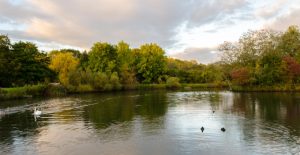
Image: Stuarts Photography/Shutterstock.com
Make sure you get outdoors and get back to nature at the Washington WWT Wetland Centre. These wetland centres are throughout the north of England. They ease the conservation of threatened habitats and therefore threatened species. The English wetlands play home to thousands of unique and diverse species. These centres let you learn about them, preserve them, and teach your kids about them. You can feed birds, meet small animals, spot wildlife tracks, and more.
Cultural Attractions
You can’t come to this neck of the woods without checking out the North East Land, Sea, and Air Museum. Nelsam, as they call themselves, are a tribute to the RAF crews that used to live here. They are inside the former RAF base in Usworth. They have a cold war bunker and a B2 Bomber on display. Tourists and locals rate this attraction so highly that it has won several Trip Advisor awards – and we all know the TA badges of honour are the best judges of locational character on the internet.
Washington has a really cute Arts Centre. They have a bar in the middle of it, with craft gins and crisps. They often run shows, sometimes give art exhibitions, and actively encourage young creative minds to flourish – and old ones. You should always check what is on if you are looking for a night out.
Sports and Recreation
If you do happen to like football in Tyne & Wear, check out our coverage of these previous Sunderland football games. We even cover them in our EFL predictions articles for 2022-23.
Washington has a community club called Washington AFC, where the children play. Washington FC was previously nicknamed the F-Pit, since the F-Pit coal miners were the first to form the team. The club was formed in 1947 officially, when coal mining was much safer, and still the town’s main industry. Washington FC plays in the Northern Football League.
There is a virtual driving range on Eddison Road in the Swan industrial estate. Alternatively, get out to the Wearside Golf Club and shoot some real rounds.
Washington Millennium Centre has loads of fun equipment for youngsters. If you are looking for either a soft play or an adventure play for the kids, take them there. It’s a community hub so if you just moved here and want to get involved, this place might help you.
There is a Hollywood bowl, a McDonald’s, and all the other modern entertainment facilities. That’s the benefit of being a New Town.
Shopping and Retail
There are two wonderful places to shop in Washington – three if you include the town centre itself. Since the New Town allocation featured a retail centre, most of the big shops in the area are in the same zone. The Galleries Shopping Centre is within that zone. It includes supermarkets, newsagents, and a pub, among other things. Alternatively, go and visit the slightly more upmarket Washington Market Village, instead.
Where to Eat and Drink in Washington, Tyne & Wear?
If you are an Indian food lover, check out the highly recommended Sunarga Indian Restaurant. Technically in Birtley, this place offers top-rated Indian nosh with hundreds of five-star reviews. Check out the TA link. We don’t think they have a website. If you prefer cool fine dining with English-themed plates, check out The Forge. They are a family-run restaurant in the heart of the town. Their menu is regularly impressive. Their chef even won North East Chef of the Year. If you want Italian and Mediterranean food, you want Ristorante Fiume, instead.
Let’s not leave out partying. If you love a stiff pint, try the Havelock or the River Bar. You can also get good pub grub in either. River bars have nice cocktails, too. You can drink in Oasis if you are trying to be trendy.
Other notable Attractions in the Area
We don’t like to leave our tourists with just one place to visit. You might arrive in this town, see all the attractions, and spend the rest of your staycation twiddling your thumbs. Instead, check out these other notable attractions nearby:
- Hunt for fossils at Whitley Bay
- Enjoy the seaside fresh air down in South Shields
- Visit Newcastle upon Tyne and go shopping for the day
- Head into Sunderland proper and take a tour
- Go to Gateshead and look at the sculptures
- Visit Tynemouth, which is pretty and English and quaint
If you still need something to do after all of that, you should check out our travel guides on the Five Minutes Spare website. We’re not joking when we tell you that we have something for everyone…
How to get to Washington, Sunderland?
How do you get to Washington? That’s the big question. Follow these bare-bones directions or take your chances with a sat nav. Google maps is legendary for this kind of thing.
By Road
It’s easy! Follow the road west from Sunderland and you will hit Washington.
By Rail
Washington railway station closed in 1963. Your nearest metro station is Seaburn. The nearest train station is in Sunderland itself.
By Air
The nearest airport is Newcastle International.
By Sea
You are landlocked but again, Sunderland has a port.
Got Five Minutes?
If you still need entertainment and you are all Netflixed-out, then come join us onsite. If not, a Facebook follow would be greatly appreciated. Help us spread the word and do your good deed for the day all in one fell swoop. We look forward to seeing you there.
Header Image: DavidGraham86/Shutterstock.com
